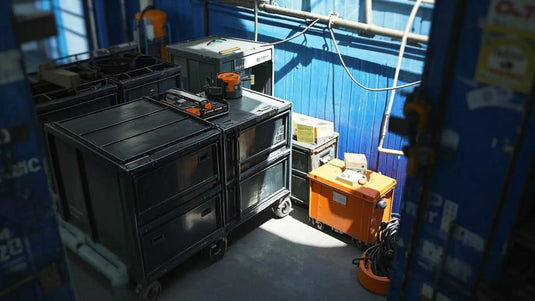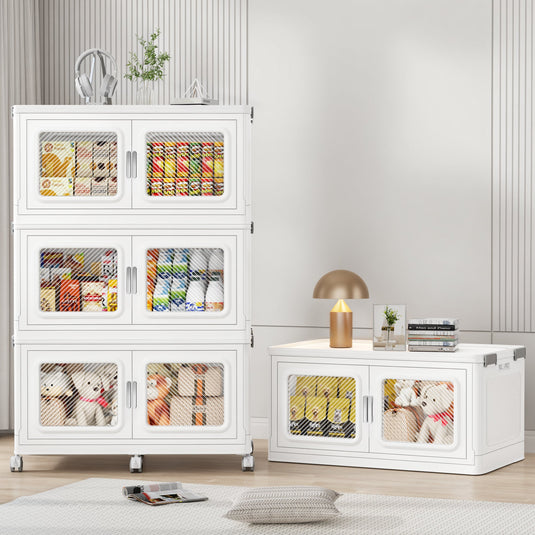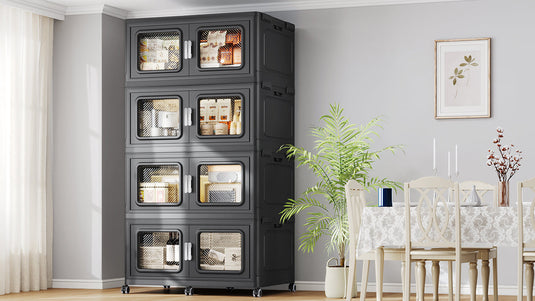 When it comes to industrial storage solutions, heavy-duty storage bins are a cornerstone for organizing and managing materials efficiently. Whether you're in manufacturing, warehousing, or retail, understanding the weight capacity of these bins is crucial for ensuring safety, optimizing space, and maintaining operational efficiency. One common question that arises is: How many pounds per foot can heavy-duty storage bins hold?
When it comes to industrial storage solutions, heavy-duty storage bins are a cornerstone for organizing and managing materials efficiently. Whether you're in manufacturing, warehousing, or retail, understanding the weight capacity of these bins is crucial for ensuring safety, optimizing space, and maintaining operational efficiency. One common question that arises is: How many pounds per foot can heavy-duty storage bins hold?
In this article, we’ll delve into the specifics of heavy-duty storage bin weight capacities, providing you with the data and insights you need to make informed decisions for your storage needs.
---
What Are Heavy-Duty Storage Bins?
Heavy-duty storage bins are robust containers designed to withstand demanding environments. They are typically made from durable materials such as high-density polyethylene (HDPE), steel, or reinforced plastic. These bins are used to store and transport heavy items like tools, parts, and bulk materials. Their strength, durability, and stackability make them ideal for industrial and commercial applications.
---
Weight Capacity: Pounds Per Foot
The weight capacity of heavy-duty storage bins is often measured in pounds per linear foot (lbs/ft), which indicates how much weight the bin can safely hold per foot of its length. This metric is particularly important when planning storage layouts or stacking bins to avoid overloading and potential accidents.
Key Factors Influencing Weight Capacity
1. Material: The material of the bin plays a significant role in its weight capacity. For example:
- Steel bins typically have a higher weight capacity than plastic bins.
- HDPE bins are lightweight but can still handle substantial loads due to their reinforced design.
2. Design and Construction: Bins with reinforced walls, ribs, or double-walled construction tend to have higher weight capacities.
3. Size and Dimensions: Larger bins may have higher total weight capacities, but the pounds per foot metric helps standardize comparisons across different sizes.
4. Load Distribution: Evenly distributed loads are easier to handle than concentrated weights, which can stress specific areas of the bin.
---
Industry Standards and Data
While weight capacities can vary by manufacturer and bin type, here are some general guidelines for heavy-duty storage bins:
- Plastic Bins: Heavy-duty plastic bins can typically hold 50 to 150 lbs per linear foot. For example, a 48-inch-long bin might have a total capacity of 200 to 600 lbs, depending on its design.
- Steel Bins: Steel storage bins are significantly stronger, with capacities ranging from 200 to 500 lbs per linear foot. A 48-inch steel bin could handle up to 800 to 2,000 lbs.
- Wire Mesh Bins: These bins, often used for lightweight but bulky items, usually have a lower capacity of 20 to 50 lbs per linear foot.
---
Practical Applications
Understanding the weight capacity of your storage bins is essential for:
1. Safety: Overloading bins can lead to structural failure, causing injuries or damage to stored items.
2. Space Optimization: Knowing the capacity helps you plan how to stack or arrange bins without exceeding weight limits.
3. Cost Efficiency: Choosing the right bin for your needs prevents unnecessary expenses on over-engineered solutions or replacements due to damage.
---
How to Choose the Right Bin
When selecting heavy-duty storage bins, consider the following:
1. Assess Your Needs: Determine the weight and volume of the items you need to store.
2. Check Manufacturer Specifications: Always refer to the manufacturer’s weight capacity guidelines.
3. Consider Future Needs: Opt for bins with slightly higher capacities to accommodate potential changes in storage requirements.
---
Conclusion
Heavy-duty storage bins are a vital component of efficient material management, but their effectiveness depends on understanding their weight capacities. By knowing how many pounds per foot a bin can hold, you can ensure safety, optimize storage space, and enhance operational efficiency. Whether you choose plastic, steel, or wire mesh bins, always prioritize quality and suitability for your specific needs.
If you’re unsure about the right bin for your application, consult with a storage solutions expert or manufacturer to get tailored recommendations. With the right bins in place, you’ll be well-equipped to handle even the heaviest storage challenges.



